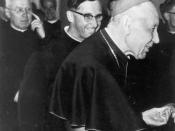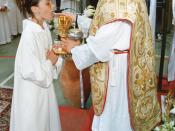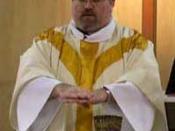The Second Vatican Council, which commenced in 1962, was the turning point for the Churches openness to the modern world. Due to many factors worldwide, the Church was falling behind and needed to make many changes to keep up with the globe. And so it did.
One area focused on during the council was the celebration of the Eucharist. Significant alterations were made to this celebration, many long overdue and all helped Catholics to be and feel more a part of their church community.
One of these changes were the bringing forward of the altar in order for the priest to face the people. With this change, all churchgoers were able to participate in more so than before, and actually see the blessing of the bread and wine. This created a sense of belonging, but even more so, equality. Previously, as the priest would face his back to the worshipping audience, it gave them a sense of being inferior, not elite enough to see the blessing.
This, after the bringing forward of the altar, changed.
Another change made was that mass was no longer to be celebrated in Latin, but in the language of the people. This allowed, virtually, all of the community to participate in readings, songs, chants and prayers. Formerly, these roles would be restricted to only those who could speak Latin, which was generally, only the priest only. Not only did this change help understand parts of the mass, but also allowed people to understand the meaning of each part.
Priests were also encouraged, after the council, to use the homily as a time of explanation and reflection. As a result, the gathered community could not only know and understand the scriptures, but furthermore recognise their meaning, reflect on them and relate them to their own...


